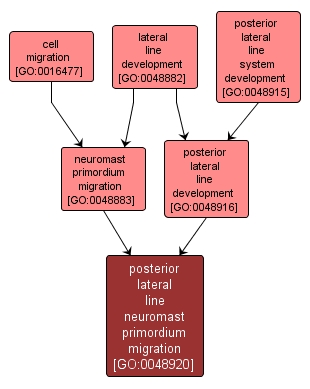| Desc: |
The migration of a relatively undifferentiated cell along the developing posterior lateral line, originating from cranial ectodermal placodes situated behind the ear. The neuromast primordium deposits proneuromasts along the lateral line, from which the neuromasts will develop. |














